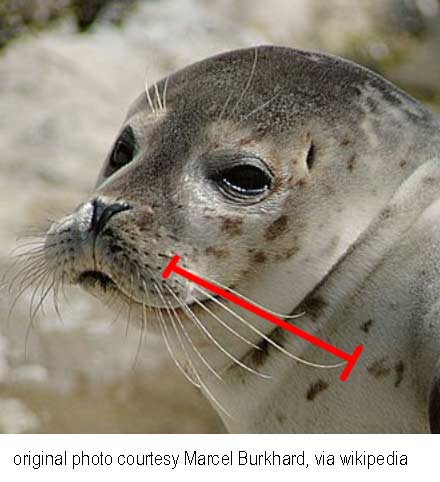The whiskers of participant seals and sea lions were stable-isotope-labeled with Carbon 13 and Nitrogen 15, and whisker growth rates were measured over a period of more than two years.
The results:
 Seals: The peak positions indicated that growth began in the
fall, continued into spring, but ceased in June, with active growth
rates of 0.33 mm/day.
Seals: The peak positions indicated that growth began in the
fall, continued into spring, but ceased in June, with active growth
rates of 0.33 mm/day.Sea Lions : After 427 days vibrissae in both sea lions showed two peaks corresponding to the markers; growth rates were calculated as 0.05 to 0.07 mm/day.
And further: “A harbor seal’s vibrissae (~10 cm) tend to be similar in length, while a Steller sea lion’s anterior mystacial vibrissae are short (~6 cm) and the posterior vibrissae much longer (>20 cm)”
Growth rates of vibrissae of harbor seals (Phoca vitulina) and Steller sea lions (Eumetopias jubatus) was published in the Canadian Journal of Zoology, 2001, 79:(6) 1053-1061, and can be read in full here:




Comments